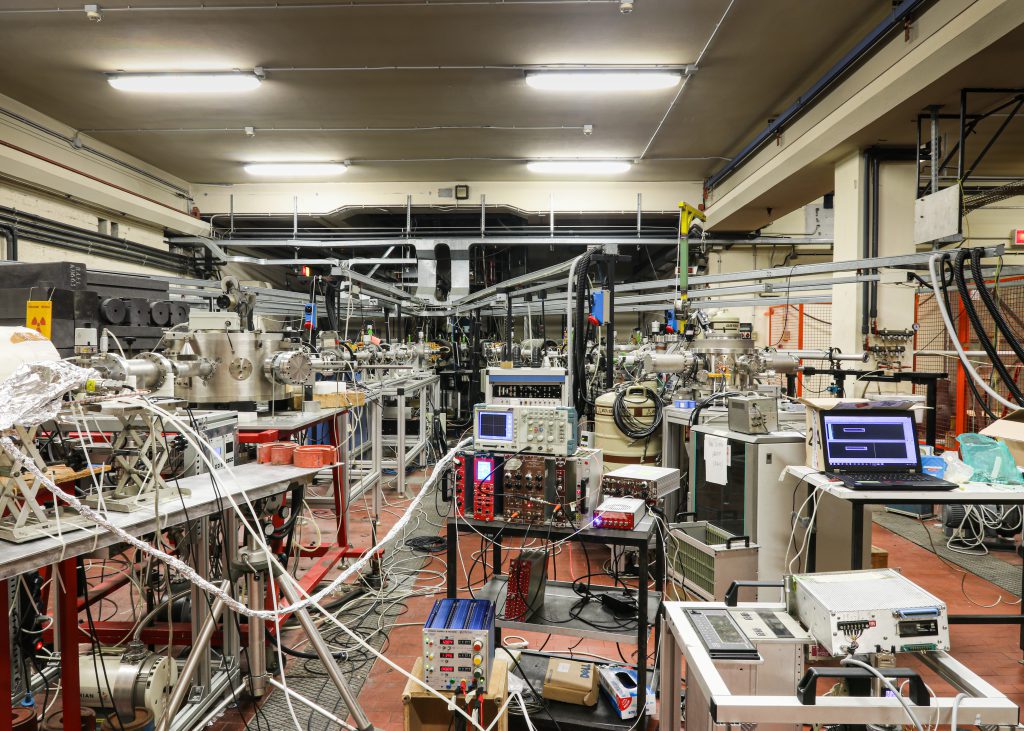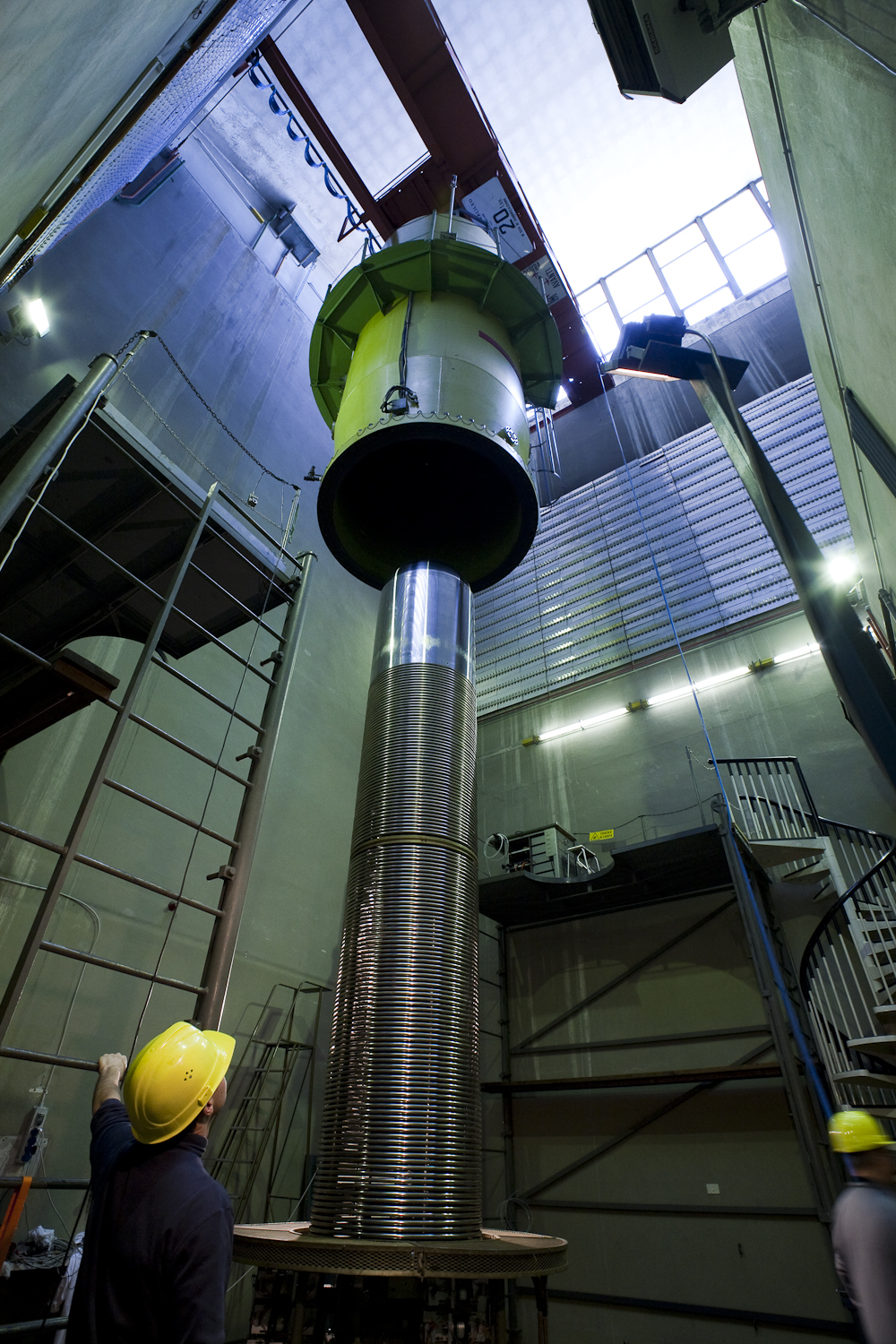The first to be installed in 1961 at LNL was the CN accelerator, a “Van de Graaff” electrostatic device. This is a vertical accelerator, housed in a tower at the north-east border of the laboratory and about 7 m tall. The high voltage terminal, placed on the top, achieved 7 million volts; from 2006, the maximum working point is 5.5 million volts and CN is mainly used during daytime. It is supported by a column and, inside, crossed by the accelerator pipe along which the electrostatic voltage is uniformly distributed between the 5.5 MV of the head, down to the ground potential (0 V) at the floor level.
The whole structure is at last contained in a large metal tank, filled in with a pressure gas at 12-14 bar (N2+SF6) having good insulating properties against electrical discharge. Inside the head of the accelerator (called the high voltage “terminal”) space is enough to install the ion source (positive ions generated by light gaseous materials such as H2, He, N2…) and other ancillaries apparatus (voltage generators, power supplies, pumps to get the accelerator pipe at the proper vacuum level).
As long as the generated ions are inside the terminal, they are protected from its Faraday cage and therefore not
affected by the voltage stage of the latter.
However, as soon as they are downward driven, from proper deflection as well as electrostatic focusing systems, and leave the terminal region, ions are subject to the electrical field distribution along the vacuum pipe. Such an acceleration process all along the accelerating column, at the end of which a final energy E = qV is gained. Here q is the ion charge state (i.e. a number quoting by how many electric charge units the ion is far from neutrality), while V is the difference between the terminal and ground voltages.
At this stage accelerated particles need to be directed towards the target station through a beam selector made by magnetic lenses and deflectors. CN may accelerate ion beams such as protons, deuterium and helium (both in single and double-charge state), which are used for fundamental and applied nuclear physics studies. The main application fields are: material science, radiobiology, radiation-matter interaction, radiation damage investigations, standard dosimetry as well as microdosimetry.
Cross sections or excitation functions measurements for still unknown or barely known nuclear reaction channels of interests in different fields, as well as prompt neutron/gamma spectrometry, are instead the main investigations performed by fundamental nuclear physics. An equipped and properly shielded neutron target station, able to exploit the accelerator maximum authorized proton beam current (3 µA), providing a neutron source intensity up to 109 -1010 s-1, is also available.

